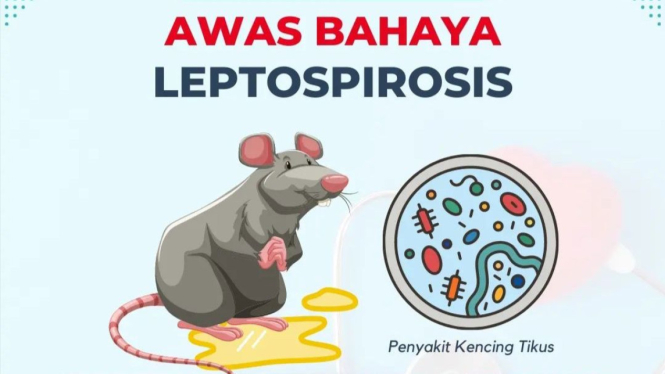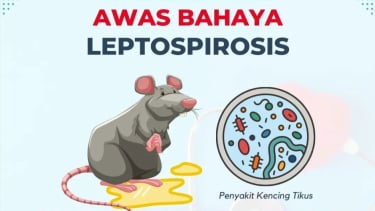Knowing More Leptospirosis: A Disease from Animal Urine
- IG @explore.bantul
Jakarta – Leptospirosis is a disease caused by the bacterium Leptospira. This bacterium can spread through the urine or blood of infected animals, such as rats, cows, dogs, and pigs.
Leptospirosis can spread through the urine of carrier animals, and a person can also become infected by coming into contact with the urine of these animals or by touching water or soil contaminated with it.
During the rainy season, you should be more cautious as there will be many puddles around you that can serve as a source of Leptospirosis transmission, as reported by the Ministry of Health on Monday.
Causes of Leptospira Infection
The bacterium Leptospira interrogans that causes leptospirosis is carried by other animals. This bacterium can live in the kidneys of these animals for several years without causing symptoms. Some animals that can spread the Leptospira bacterium are, dogs, pigs, horses, cows, and rats.
Awas bahaya wabah Leptospirosis
- IG @sehatbareng.id
Symptoms of Leptospirosis
Not only that, but leptospirosis also has symptoms that will be experienced by someone who contracts the disease, including:
1. Fever
2. Headache
3. Nausea, vomiting, and loss of appetite.
4. Diarrhea
5. Red eyes
6. Muscle pain
7. Abdominal pain
8. Red spots on the skin that do not disappear when pressed.
Transmission of Leptospirosis
As for the initial stages of Leptospira infection spreading in the human body, they include:
1. Skin contact with the urine of carrier animals.
2. Skin contact with water and soil contaminated with the urine of carrier animals.
3. Consuming food containing the urine of animals carrying the Leptospirosis-causing bacteria.
Leptospira bacteria can enter the body through open wounds, both small and large, such as cuts. They can also enter through the mouth, nose, eyes, and digestive tract.
Prevention of Leptospirosis
There are several methods that can be used to prevent and reduce the likelihood of Leptospirosis infection in the body, including:
1. When working in environments at risk of Leptospira bacterial transmission, use protective clothing, gloves, boots, and eye protection.
2. Cover wounds with waterproof bandages, especially when outdoors.
3. Avoid direct contact with contaminated water, such as when swimming or bathing.
4. Drinking water.
5. Wash hands before and after interacting with animals.
6. Maintain environmental cleanliness.
7. Vaccinate livestock or pets.

































